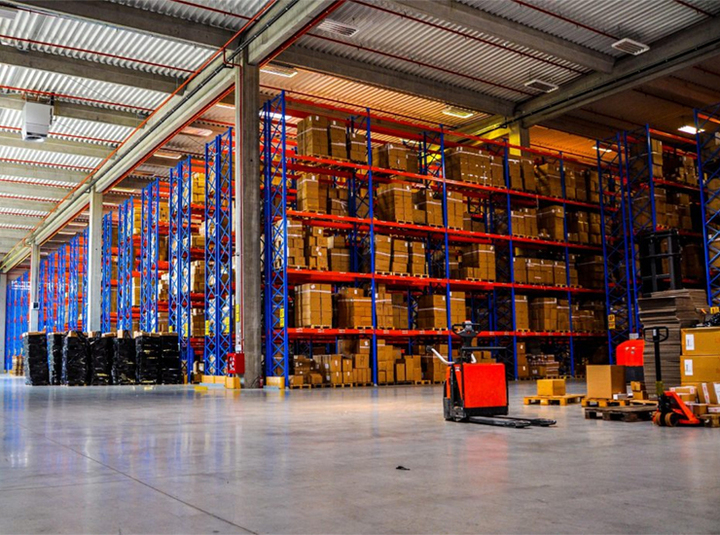
WAREHOUSE DESIGN & CONSTRUCTION CONSIDERATIONS
When it comes to warehouse construction, there are many design and construction details that must be considered to achieve a successful development. Floor systems, exterior wall types, structure, bay sizing, building systems, and site design are all elements that should be explored in the earliest stages of a project to ensure the most functional and cost-effective facility.

Space utilization, pre-existing site conditions, schedule needs, and more can all play a role in determining the most advantageous option for each of these elements. Partnering with an experienced contractor that is actively engaged throughout the design and beginning stages of a project will ensure that the very best design and construction decisions are made, resulting in a superior finished product and the very best customer experience.
Choosing the proper floor system for a warehouse requires the knowledge of concrete types, site dynamics, and how a space will be utilized. Concrete floors can be reinforced or un-reinforced, formulated to be freezer/cooler compatible, shrinkage compensating, and specific to the floor loading and equipment path needs of the user. The needs of the user should be established in the earliest stages of the project to determine the most advantageous floor system choice.
Exterior wall type selection for warehouses is often based on building size, schedule needs, and exterior façade preferences. For larger warehouse facilities, uninsulated concrete panels poured onsite are typically the most cost-effective, and almost any exterior siding, cladding, or veneer can be applied to the outward facing portion. Precast panels are produced offsite year-round and installed prior to floor slab, making them the ideal choice in some circumstances in which schedule restraints are a concern.
When determining the structure of a warehouse facility, roof loads, wall cladding, and storage heights must be considered. Steel joists, girders, and column structures can be engineered to span almost any distance and designed to support significant roof loads. Pre-engineered metal buildings can accommodate almost any wall cladding including insulated metal panels, precast concrete panels, and block/masonry. For warehouses in which large storage heights are necessary, a rack supported structure may be the most appropriate. Rack supported structures maximize warehouse footprint space and are typically associated with AS/RS facilities.
Bay sizing and racking layout options and standards are also important considerations in warehouse construction. Racking layouts, aisle sizes, and travel paths for forklifts are determined based on the width and clear height of the building. A warehouse contractor with the proper knowledge of industry standards regarding these factors is crucial to successful warehouse construction and the overall functionality of the facility.
Dock types, sizes, and specifications must also be determined in the design phase of a warehouse construction project. Owners can choose between mechanical and hydraulic docks based on their functionality needs. Additional building systems that must be considered include electrical service, HVAC, fire protection, and lighting. In addition to evaluating options and standards associated with these systems, it is also critical to understand code requirements to avoid design change orders and occupancy delays
When it comes to site design, there are several rules of thumb regarding car parking per square foot, truck parking per square foot, docks per square foot, and office space per square foot. There are also standard dimensions for dock aprons, truck drive, truck parking, car parking, and drive aisles. Partnering with an experienced warehouse contractor will ensure that a warehouse facility’s site is designed to utilize the spac